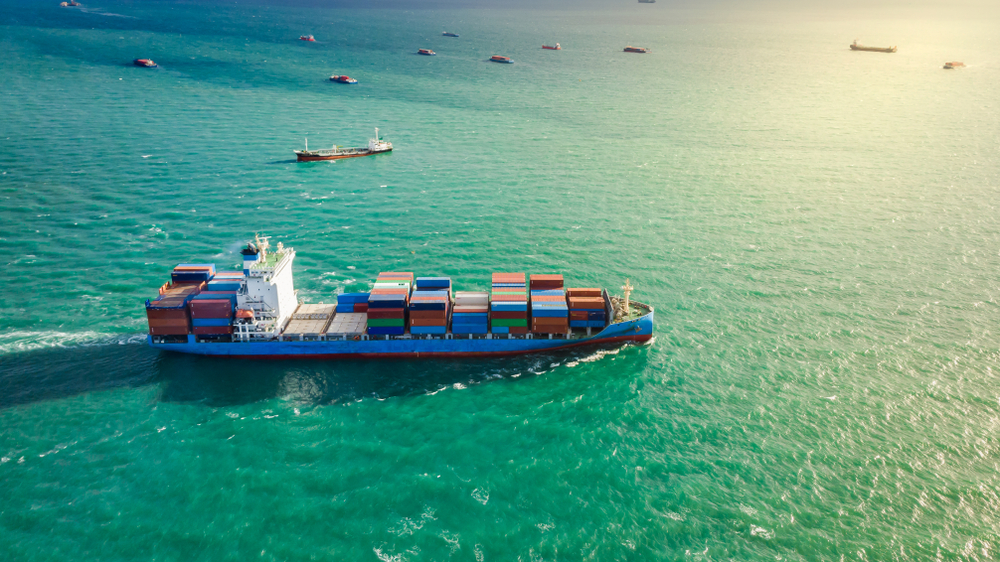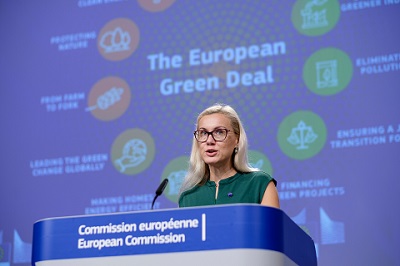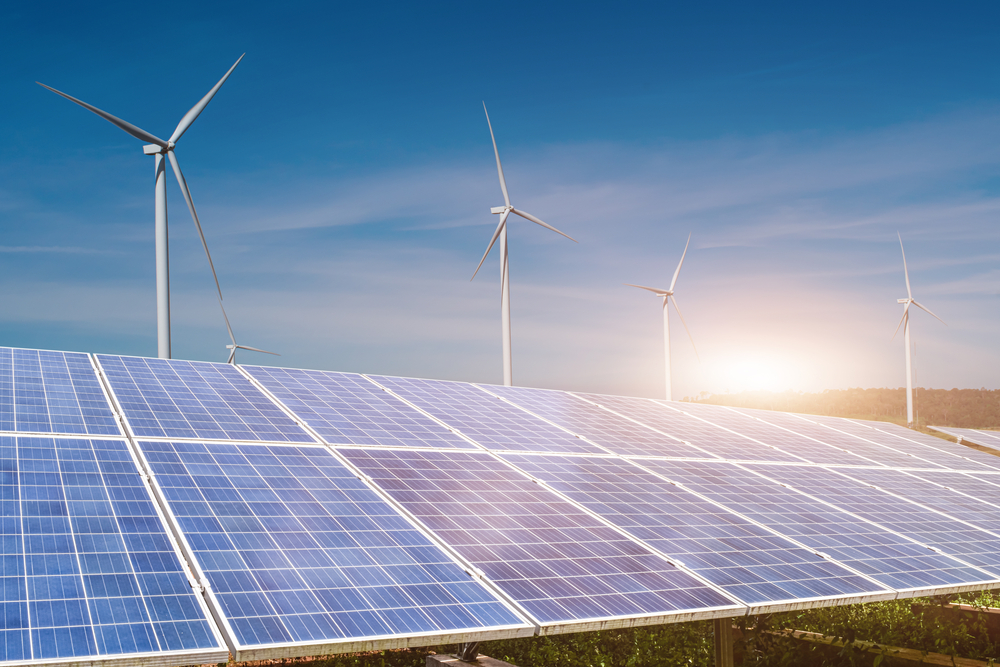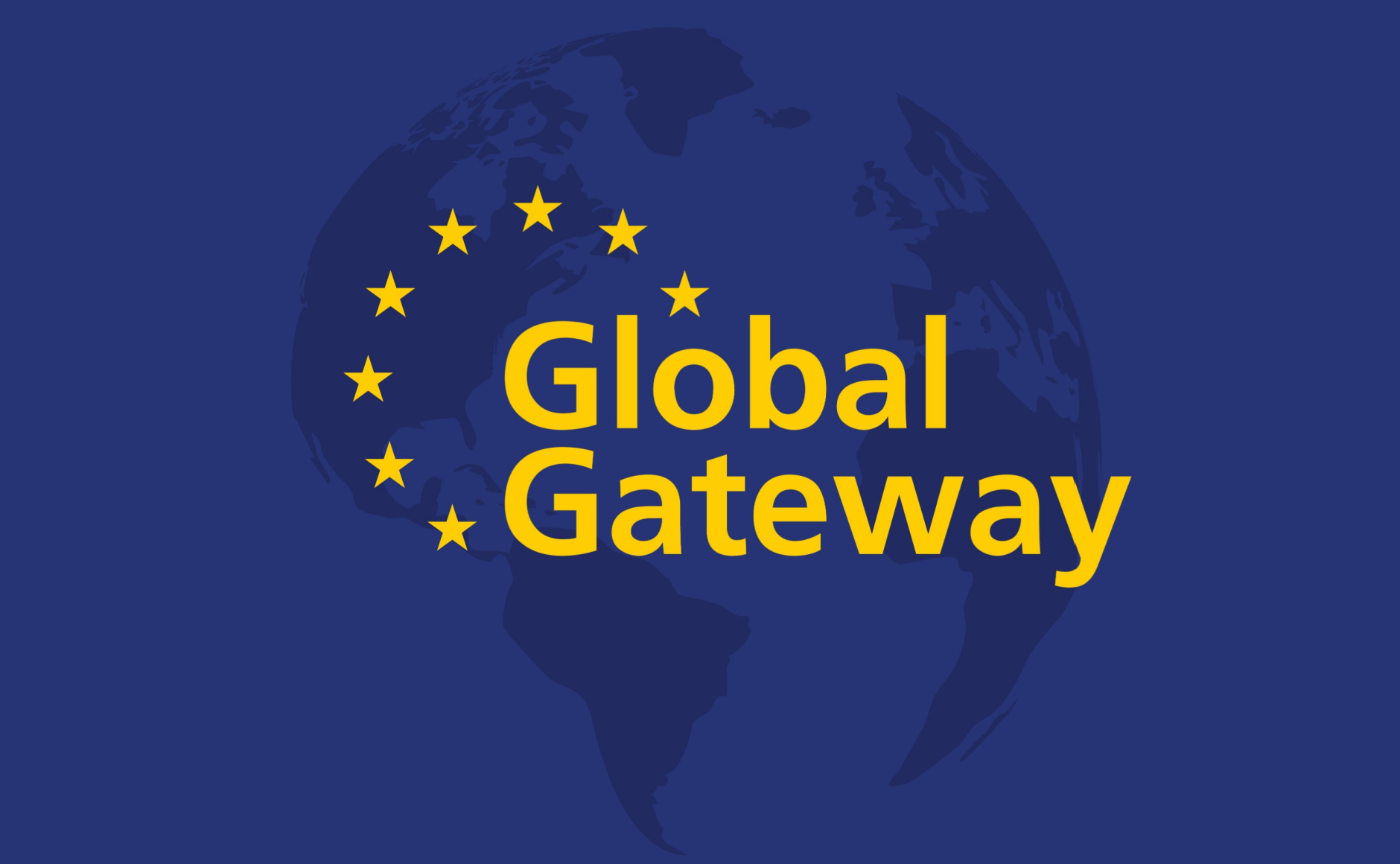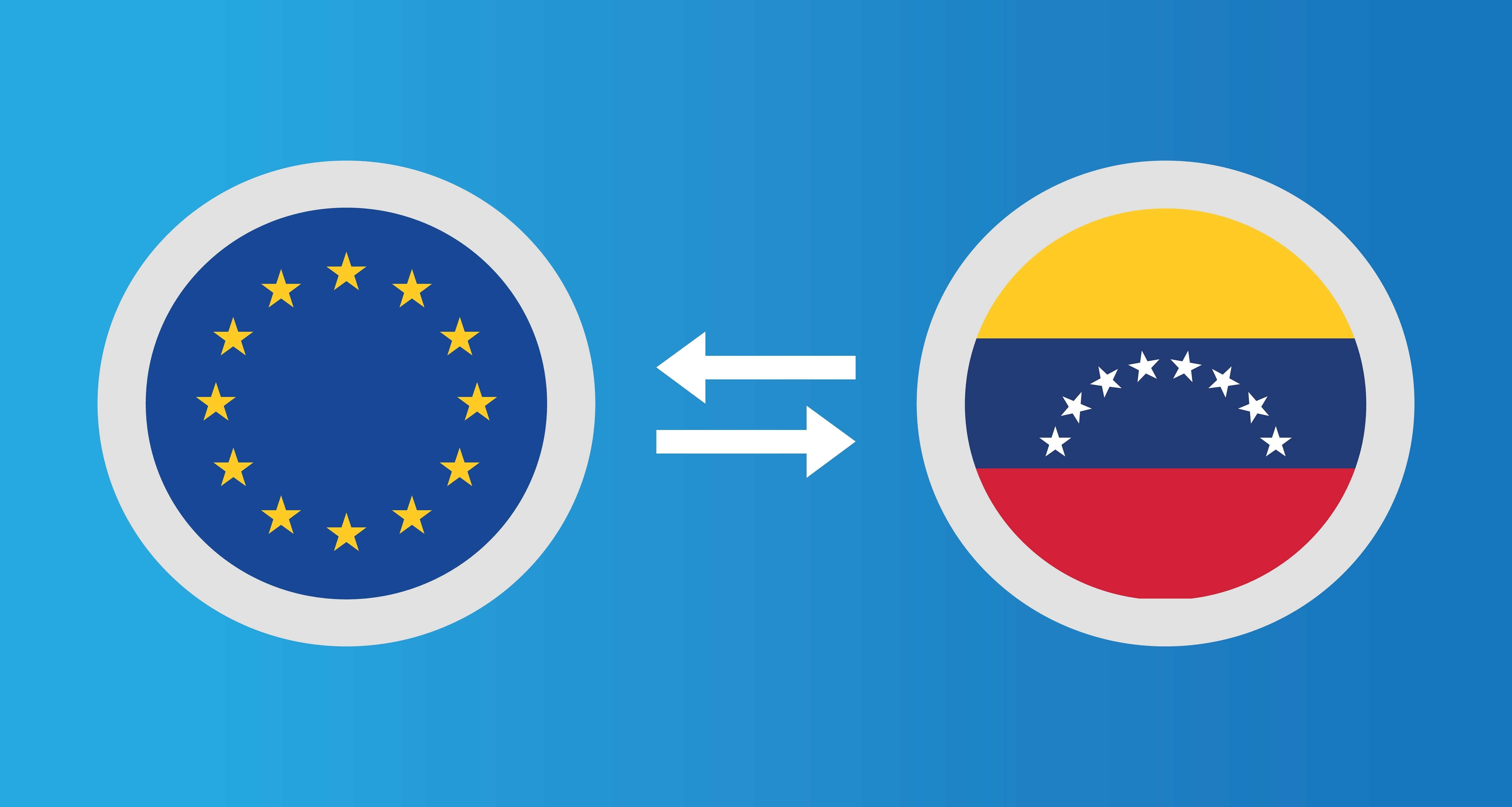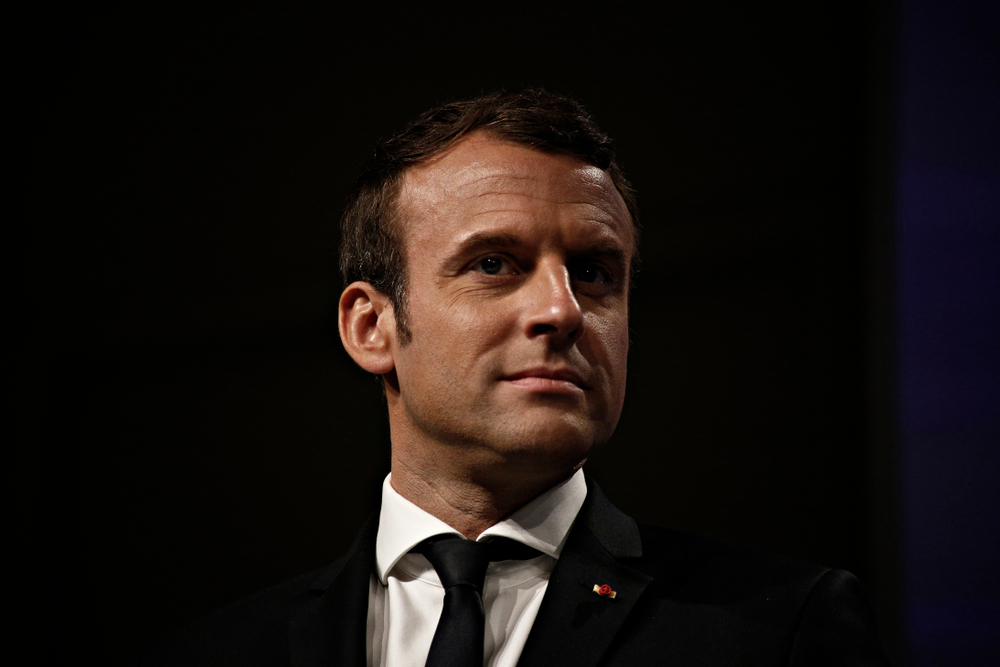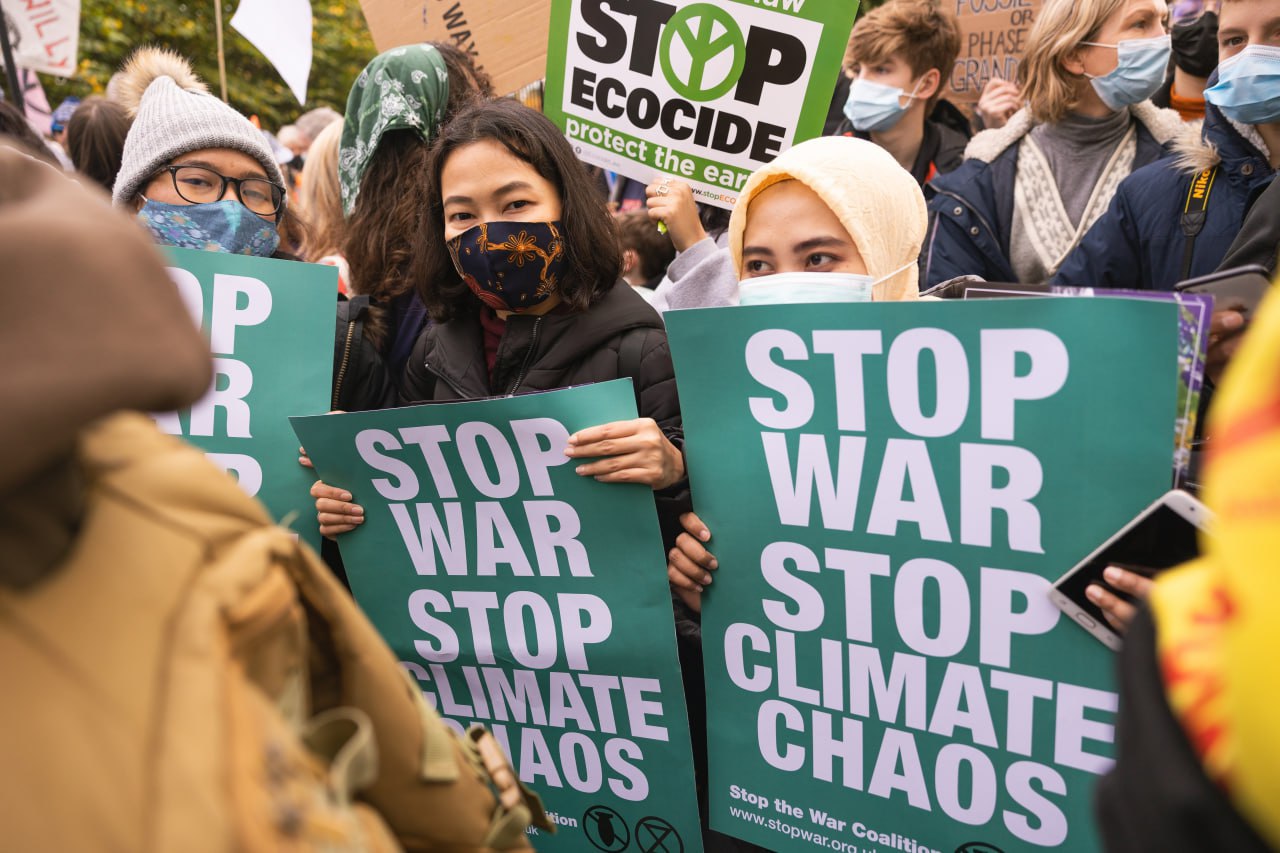
War is a climate killer
by Angelika Claußen
Russia’s war on Ukraine has pushed the climate crisis off the agenda. But we need a ceasefire and global demilitarisation for a 1.5°C world War brings death and destruction – not least to the environment and climate. Russia’s invasion of Ukraine offers a depressing reminder of that fact, and further increases the military sector’s already enormous global CO2 footprint. In addition, the eastern Ukrainian cities where fighting is taking place are home to fossil fuel infrastructure such as chemical factories, oil refineries, and coal mines, the bombing of which produces a cocktail of toxic substances that has devastating environmental impacts. Efforts to arm the two sides, moreover, are consuming materials and resources that could otherwise go towards tackling the climate crisis. Based on the global C02budget, humanity has less than eight years to ensure it still hits its 1.5-degree warming target. To do so, we need to urgently implement reforms in all areas, to bring about ‘systemic change’, as the IPCC report from early April puts it. The military sector barely gets a mention in this almost 3,000-page document, however, with the word ‘military’ coming up just six times. You might thus conclude that the sector is of little relevance to the climate emergency. The reality is rather different. Using military hardware results in huge quantities of emissions. In the war in Ukraine, 36 Russian attacks on fossil fuel infrastructure were recorded in the first five weeks alone, leading to prolonged fires that released soot particulates, methane and C02 into the atmosphere, while oil infrastructure has been ablaze on the Russian side too. The oil fields that were set on fire in 1991 during the second Gulf War contributed two per cent of global emissions for that year. While greenhouse gas emissions are one of the most significant impacts of war, the quantity emitted depends on the duration of the conflict and on what tanks, trucks, and planes are used. Another is the contamination of ecosystems that sequester CO2. Staff from Ukraine’s environment inspectorate are currently collecting water and soil samples in the areas around shelled industrial facilities.Military emissionsThe ramifications for the climate can be catastrophic in scale. According to a study by the organisation Oil Change International, the Iraq War was responsible for 141 million tonnes of C02equivalent emissions between its outbreak in 2003 and the report’s publication in 2008. By way of comparison: some 21 EU member states emitted less CO2equivalent in 2019, with only six states topping that figure. Post-war rebuilding also produces significant emissions. Estimates suggest that reconstruction in Syria will lead to 22 million tonnes of CO2 emissions. The rebuilding in Ukraine, too, will consume vast amounts of resources. At the World Economic Forum in Davos, President Volodymyr Zelensky stated that at least 5 billion US dollars of reconstruction funding was needed per month. Every effort should thus be made to achieve an immediate ceasefire – both for the sake of the climate and to avoid further human suffering. Emissions from armed forces and military equipment cause considerable environmental harm around the globe. And yet, bowing to pressure from the US, military CO2 emissions were excluded from climate treaties such as the Kyoto Protocol of 1997 and the Paris Agreement of 2015. As a result, they do not form part of their binding agreements and are neither surveyed systematically nor published transparently. The consequent lack of data means we can only make vague estimates as to the military sector’s impact on global heating. According to a study by Neta Crawford, co-director of the Costs of War project at Brown University, the US defence ministry alone is a bigger contributor to the climate crisis than individual countries such as Sweden or Portugal. This makes it the largest institutional source of greenhouse gases in the world. Globally, the military sector is estimated to generate around six per cent of all CO2emissions.Germany’s roleWith its new €100bn fund for the military, Germany seems willing to countenance further far-reaching climate impacts. This military investment will tie up financial and intellectual resources, making it highly unlikely that the 1.5-degree target can be achieved. That countries wish to better protect themselves against potential Russian aggression is understandable. But the public debate around this issue needs to balance an uncertain increase in security against a reduction in our ability to fight climate change. The German military was already responsible for around 4.5 million tonnes of CO2 equivalent emissions in 2019, significantly more than the 2.5 million tonnes contributed by civilian aviation within Germany. This is now set to increase. Just one of the F-35 jets ordered from Lockheed Martin emits around 28 tonnes of CO2 equivalent per tank of fuel. For comparison: the average annual emissions footprint in Germany is 11.2 tonnes per head. The income from the sale of fossil fuels provides ongoing funding for Russia’s war of aggression. From 24 February to 24 April 2022, the country’s fossil fuel exports via sea routes and pipelines had an estimated value of €58bn. The EU accounts for 70 per cent of that total, or €39bn, while Germany is the largest single importer of Russian fossil fuels at €8.3bn worth. Our fossil fuel dependency is thus a factor in both the climate crisis and the invasion of Ukraine. And yet representatives of politics and business are using the war as an excuse to delay the necessary socio-ecological transformation. While corporations still stuck in the fossil fuel age – such as BP, Shell, and Saudi-Aramco – are posting record profits, the climate crisis continues apace. The likes of Rheinmetall and NATO chief Jens Stoltenberg may champion climate-neutral warfare using eco-friendly tanks and hydrogen fuel, but this is surely not the answer. Western armed forces, security experts, and arms manufacturers are well aware of the significane of climate change, as evidenced by the numerous security strategies, policy statements, and sustainability reports published on the subject in recent years. These outline ways to adapt to a changing climate while ensuring the doctrines of growth and hegemony are nonetheless defended against any and all resistance.Ceasefire nowTogether with the EU and NATO, Germany is preparing for scenarios such as war, environmental disaster, and influxes of refugees in order to ensure its foreign policy will still be fit for purpose and its security interests protected. A cynical approach given that the worst affected – those who, as some see it, Germany needs protecting from – will be those who have contributed least to global warming. And one that seems even more absurd when you consider that the environmental destruction brought about by military investment and resource-related conflicts will help to further heat the climate. At the same time, steps are being taken to reduce dependence on fossil fuels. Nonetheless, a Greenpeace report published last year demonstrates that the majority of all EU military missions have links to the protection of oil and gas imports. This dangerous relationship between fossil fuels, military missions, and war needs to end. More arms mean more damage to the climate, not greater security. Rising defence budgets among NATO states will simply convince Russia and China to increase military investment in turn. At $2.1 trillion, global arms spending has already reached record levels. As the war in Ukraine goes on, the biggest challenge of the 21st century – the climate crisis – has slipped down the agenda. We mustn’t forget, though, that efforts to tackle that crisis can only succeed if all countries – including Russia – work together. The immediate demand is for a ceasefire, followed by measures to build trust, such as international disarmament treaties. Moreover, Russia will need outside help if it is to transition to a climate-friendly energy industry. What’s required is a fundamental socio-ecological transformation, with policy-making dictated by the needs of all. That may seem inconceivable at present, but what’s the alternative? Unchecked global warming would be catastrophic for the planet’s entire population.










